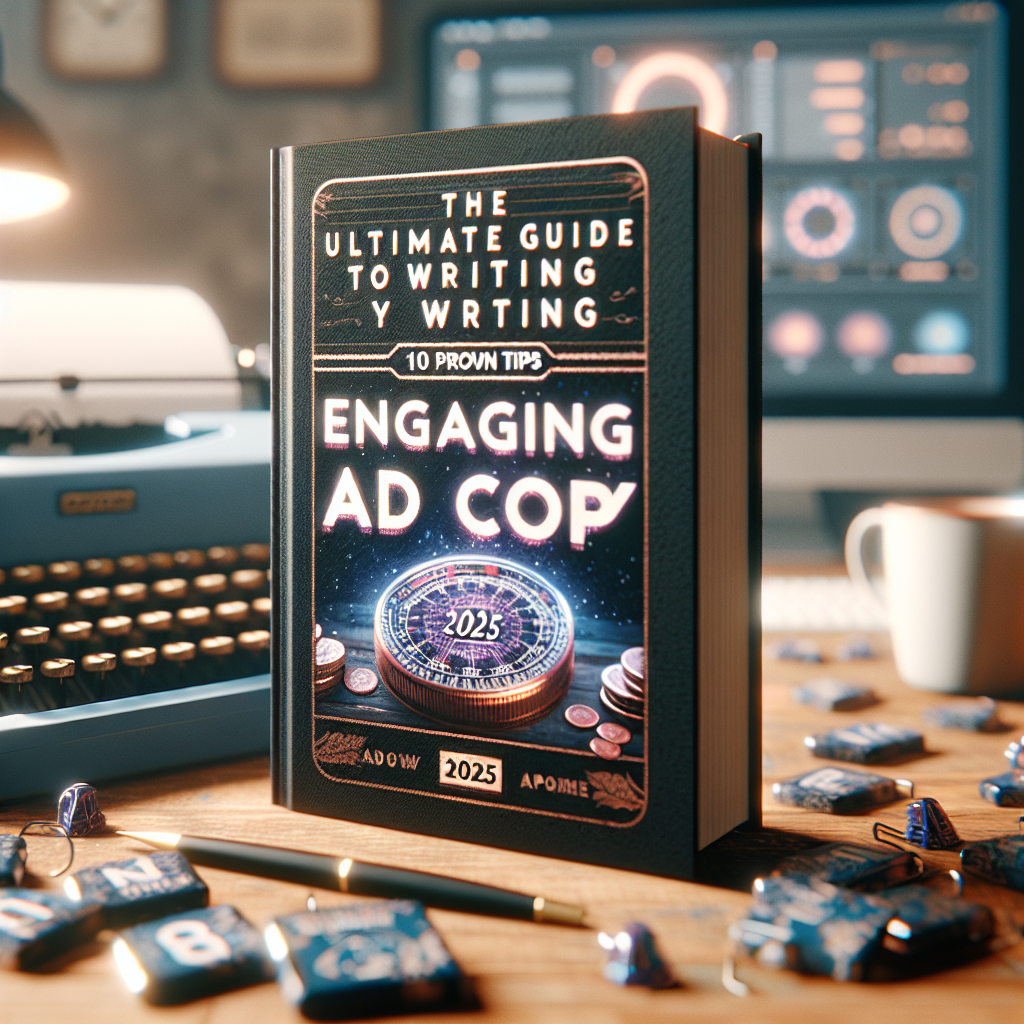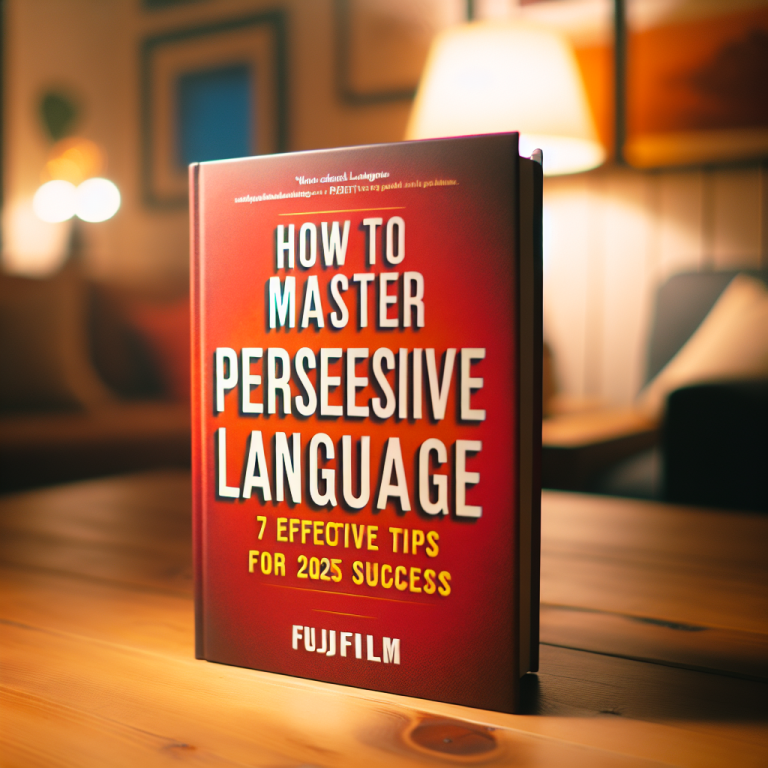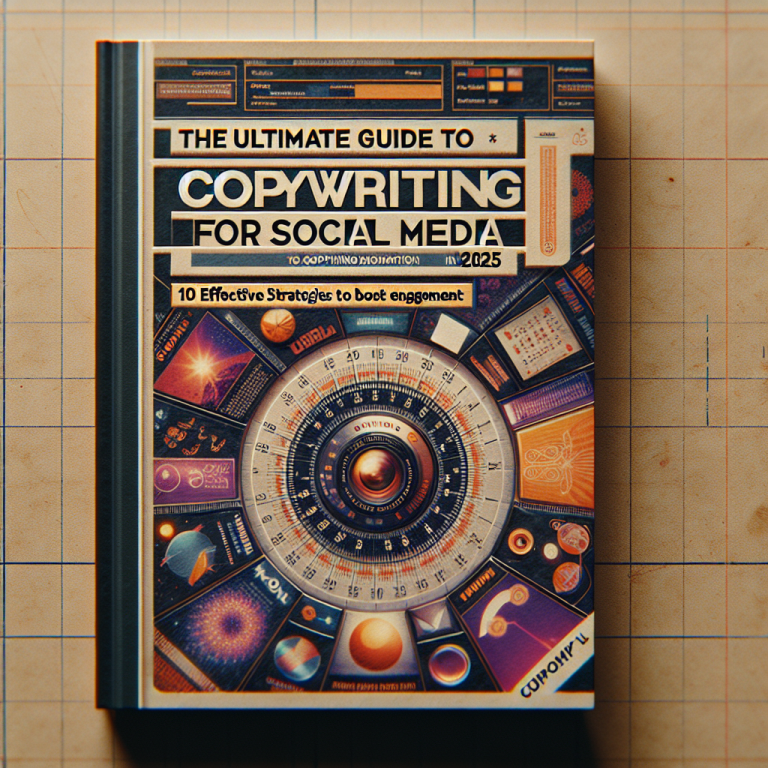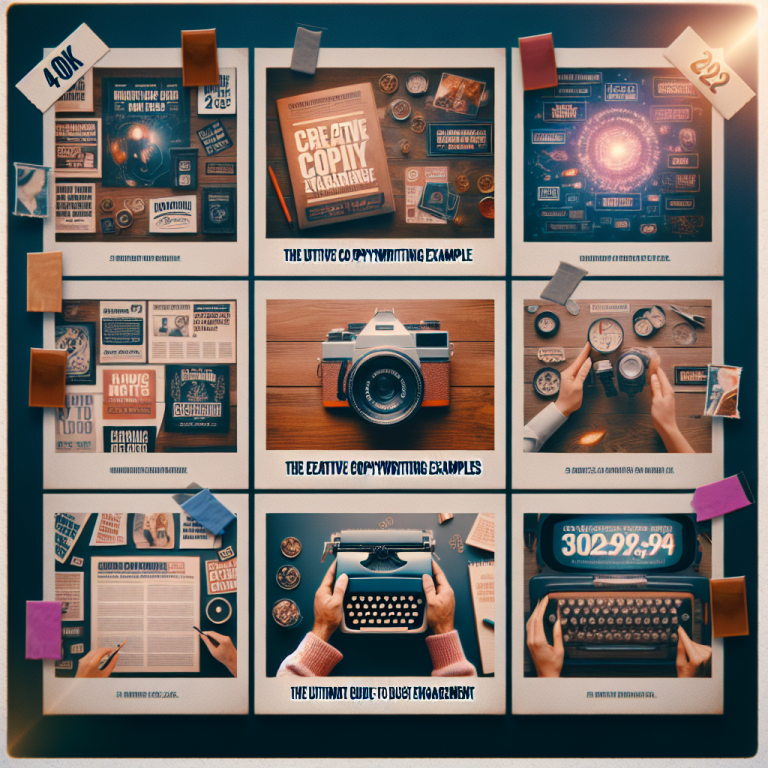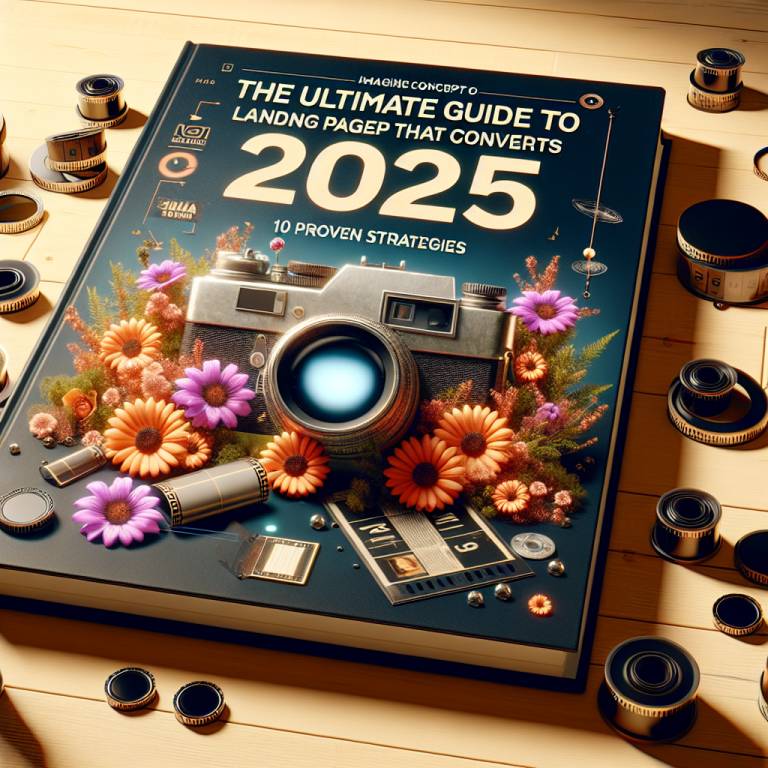The Ultimate Guide to Writing Engaging Ad Copy: 10 Proven Tips for 2025
1. Know Your Audience Inside Out
Understanding Your Target Market
When it comes to writing engaging ad copy, the foundation is knowing exactly who you’re speaking to. In 2025, audiences are more diverse and discerning than ever. Conduct thorough market research, analyze customer data, and develop detailed buyer personas. The more you understand their pain points, desires, and behaviors, the more aligned your messaging will be.
For example, if you’re targeting young professionals interested in fitness, focus on their goals such as efficiency and results. Use language and themes that resonate with their lifestyle. This understanding makes your ad copy more engaging and increases conversion rates.
By tapping into specific audience segments, you tailor your message, making it more compelling. Remember, generic ads donât catch attention anymore. Personalization is key to writing engaging ad copy that performs well in 2025.
Using Data Analytics for Audience Insights
Leverage tools like Google Analytics, social media insights, and CRM data to gather real-time information about your audienceâs preferences. This data helps you refine your messaging and create more targeted ad copy.
Research shows that personalized ads have a 42% higher click-through rate than generic ones. Use this data to craft relevant content that speaks directly to your audienceâs needs.
Stay updated with audience trends by regularly analyzing your data, which allows you to adapt your writing engaging ad copy continuously. This approach keeps your campaigns fresh and effective.
2. Craft Compelling Headlines
The Power of Attention-Grabbing Headlines
Your headline is your first impression â it determines whether someone will read the rest of your ad. In 2025, with people bombarded by content, headlines need to be clear, concise, and intriguing.
Use headlines that promise value, evoke curiosity, or present a solution. For instance, “Transform Your Workout Routine in 7 Days” instantly communicates benefit and sparks interest.
Data indicates that 8 out of 10 people read headline copy, but only 2 out of 10 will continue to read the rest. Thatâs why investing effort into crafting compelling headlines is critical when writing engaging ad copy.
Examples of Effective Headlines
Look to successful campaigns from brands like Nike or Apple, which craft headlines that resonate. Incorporate numbers, questions, or bold statements to stand out.
For example, “Unlock Your Potential with Our Digital Course” clearly appeals to ambitions and offers a solution, making it more likely to engage viewers.
Test different headline styles through A/B testing to discover what resonates most with your audience. Remember, a powerful headline is your first step in writing engaging ad copy.
3. Use Power Words Effectively
What Are Power Words?
Power words provoke emotion, curiosity, and action. Theyâre essential tools when writing engaging ad copy because they tap into the subconscious mind of your audience.
Examples include words like “Exclusive,” “Free,” “Proven,” “Instant,” and “Limited.” Using these words strategically boosts the persuasive impact of your message.
In 2025, consumers respond even better to authentic and emotionally charged language. Incorporating power words enhances credibility and motivates people to act.
Placement and Frequency
Donât overdo it, but place your power words where they matter most â in headlines, call-to-actions, and key benefit statements. This emphasis helps your ad stand out in crowded feeds.
Test different combinations to see which trigger the strongest responses. Remember, writing engaging ad copy is about striking an emotional chord, and power words are a vital tool in that process.
Incorporating power words will elevate your copy and increase conversions in the competitive landscape of 2025 advertising.
4. Emphasize Benefits Over Features
Why Benefits Matter More
While features describe your product, benefits tell your audience how it improves their lives. In 2025, focusing on benefits creates a stronger emotional connection, leading to higher engagement.
For example, instead of saying, “Our smartwatch has a 2-week battery life,” highlight the benefit: “Stay connected all week without worrying about charging.”
Research shows that ads centered on benefits convert at a higher rate because they answer the fundamental question: “What’s in it for me?”
Writing Benefit-Driven Copy
Identify the core benefits your product provides and craft your messaging around them. Use your audience insights to align benefits with their specific needs.
Use storytelling to illustrate how your offering solves real problems. This approach makes your writing engaging ad copy more relatable and persuasive.
In 2025, personalization in benefits makes your ads more relevant. Personalized benefit statements are proven to increase engagement and conversion.
5. Invoke Emotion to Connect
The Emotional Power in Advertising
Emotional appeals significantly influence buying decisions. In 2025, consumers seek authentic stories they can relate to, making emotional relevance crucial for writing engaging ad copy.
Use storytelling techniques to evoke feelings of happiness, security, or ambition. For example, showcasing customer success stories builds trust and emotional resonance.
Statistics indicate that emotionally charged ads are twice as likely to be remembered and shared. Incorporating emotion into your messaging enhances your ad’s effectiveness.
Techniques for Emotional Engagement
Use words that trigger feelings and vivid imagery to craft your ad copy. Incorporate visuals that complement your message to deepen emotional impact.
Additionally, tapping into universal themes like family, health, or achievement can make your ads more powerful and memorable in 2025.
The goal is to create an emotional connection that motivates action, making your writing engaging ad copy truly stand out.
6. Include a Strong Call-To-Action
Why a Clear CTA Is Essential
Your ad copy isn’t complete without a compelling call-to-action (CTA). The CTA guides your audience to the next step, whether it’s making a purchase, signing up, or learning more.
In 2025, CTAs should be clear, concise, and action-oriented. For example, “Get Started Today” or “Claim Your Free Trial” create urgency and clarity.
Failing to include a strong CTA can result in missed opportunities, regardless of how well your ad copy engages the audience initially.
Tips for Effective CTAs
- Use action verbs: “Join,” “Download,” “Discover”
- Create urgency: “Limited Time Offer”
- Make it visually prominent
Always test different CTA styles and placements to identify what works best for your audience in 2025.
7. Optimize for Digital Platforms
Adapting Copy for Different Channels
Writing engaging ad copy differs depending on where it’s displayed. Social media, search engines, and display networks each require tailored approaches. In 2025, optimizing your message for each platform increases engagement and conversions.
For instance, concise text with strong visuals works best on Instagram, while detailed descriptions perform well on LinkedIn. Mobile optimization is also critical, as 75% of digital ad traffic comes from smartphones.
Utilize platform-specific features like hashtags, keywords, and ad formats to maximize reach and impact.
Using Data for Optimization
Monitor performance metrics closely. Use insights to refine your messaging, ensuring your writing engaging ad copy resonates across each channel.
Automation tools and AI-driven analytics can help you A/B test variations quickly, leading to continuous improvements.
Staying adaptable and current with platform best practices in 2025 allows your ad copy to stay relevant and effective.
8. Test and Iterate Your Copy
The Importance of Continuous Improvement
Effective writing engaging ad copy is an iterative process. Regular testing allows you to discover what appeals most to your audience and refine your messaging accordingly.
Use A/B testing to compare different headlines, CTAs, or visual elements. Analyze which versions perform better and adapt your copy strategy accordingly.
In 2025, data-driven decisions are more accessible than ever, making it essential to treat your ad copy as an evolving asset rather than a one-time effort.
Best Practices for Testing
Set clear objectives and metrics before testing. Focus on key performance indicators like click-through and conversion rates.
Make small, incremental changes to isolate what impacts performance positively. Remember, even minor adjustments can significantly boost engagement.
Consistently iterating your writing engaging ad copy ensures long-term success and relevance in the fast-paced digital landscape.
9. Stay Current with Trends
Adapting to 2025 Market Shifts
Staying updated with the latest marketing trends, technology, and audience preferences is crucial. In 2025, AI, personalization, and immersive content are reshaping advertising.
For example, incorporating AI-generated content and chatbots into your campaigns can personalize user experiences, making your writing engaging ad copy even more effective.
Follow industry reports, attend webinars, and subscribe to marketing publications to keep your skills sharp and your messaging fresh.
Trending Content Types
Video ads, interactive content, and augmented reality experiences are becoming dominant channels for engagement. Incorporate these formats into your strategy.
Trends indicate that 65% of consumers expect personalized experiences in 2025 â tailor your ad copy accordingly to meet these expectations.
Being proactive in trend adoption helps your campaigns stay relevant and more likely to connect with your audience.
10. Be Authentic and Credible
Building Trust Through Authenticity
Consumers are increasingly skeptical of marketing tactics. In 2025, authenticity and credibility are paramount. Your ad copy should reflect genuine values and transparent messaging.
Avoid exaggerated claims; instead, focus on honest benefits and real customer testimonials. Sharing authentic stories fosters trust and goodwill.
This authenticity makes writing engaging ad copy more effective because it resonates with audiences looking for trustworthy brands.
Establishing Credibility
Use certifications, awards, and social proof to back your claims. Incorporate case studies and customer reviews directly into your ads.
Building credibility enhances your brandâs reputation, making your ad copy more persuasive and memorable.
In 2025, transparency and authenticity are not optional â they are the foundation of successful advertising.
Frequently Asked Questions
Q1: How do I start writing engaging ad copy?
Begin by understanding your audience deeply, then create clear, benefit-driven messages with compelling headlines and strong calls-to-action.
Q2: What are the most effective words for writing engaging ad copy?
Power words like “free,” “limited,” “proven,” and “exclusive” evoke emotion and drive action. Use them strategically in your headlines and CTAs.
Q3: How often should I test my ad copy?
Continuously test and analyze your ad copy â ideally through A/B testing â to refine your messaging and improve performance over time.
Q4: Why is authenticity important in writing engaging ad copy?
Authenticity builds trust with your audience, making your ad copy more credible and increasing the likelihood of conversions in 2025’s market.
Q5: How do I stay current with trends in advertising?
Follow industry updates, leverage new technologies like AI, and analyze competitor strategies to keep your advertising fresh, relevant, and engaging.
Conclusion
In 2025, mastering the art of writing engaging ad copy is more important than ever. From understanding your audience to incorporating the latest trends, each of these ten tips equips you to craft compelling messages that convert. Remember, the key to success lies in continuous testing, authenticity, and staying adaptable in the dynamic digital landscape. By focusing on writing engaging ad copy that resonates, you will stand out and build meaningful connections with your audience.

